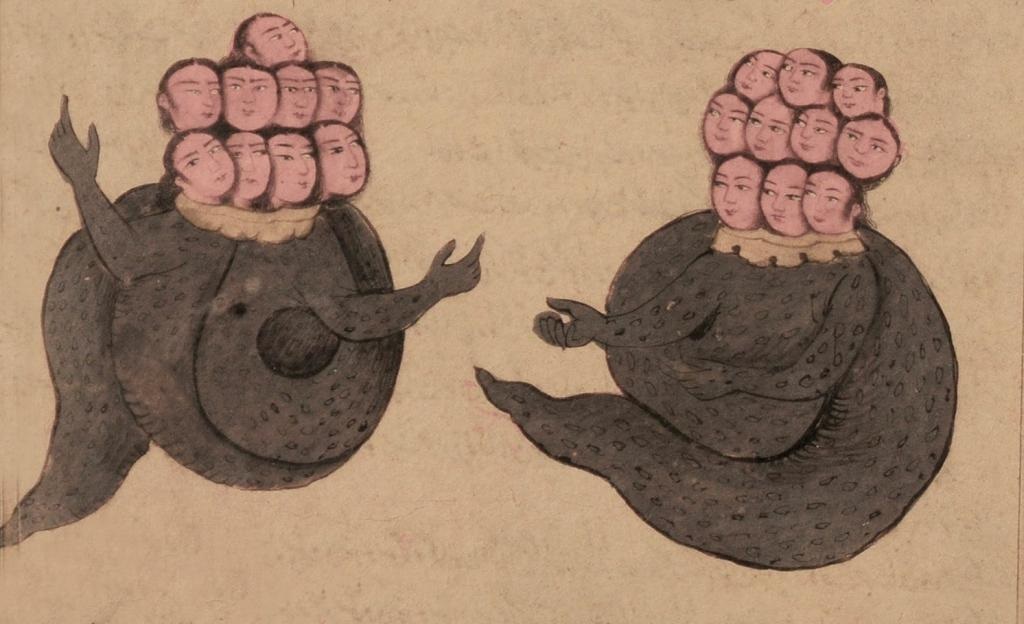


A folio from Ajayeb al Makhluqhat. Image courtesy Morehshin Allahyari
According to the Qur’an, the people of Ya’jooj and Ma’jooj spread great mischief on earth, so Allah gave Zulqarnayn the power to build a barrier to detain them, separating them from humanity. In the prophesy, the Ya’jooj and Ma’jooj present a looming threat – that one day the wall will crumble and their release will precede the end of the world.
Finding herself literally “walled out” of her own country during Donald Trump’s first attempt at the Muslim travel ban, this story gained a particular pertinence for Iranian-American artist Morehshin Allahyari as she started to consider her new commission for the Media Wall at The Photographers’ Gallery.
The resulting video, She Who Sees The Unknown: Ya'jooj Ma'jooj, 2017, imagines that Ya’jooj and Ma’jooj have broken down the wall and become one with the world, only to be pushed back and emerge again in an eternal repeating battle. It is based on her research into Middle-Eastern dark goddesses, 3D printing and the production of a speculative narrative from this Qur’anic story.
Allahyari’s video embodies a disarming collaged narrative meshing together ideas that reach far back into the mythological past and into the future of a new virtual world. The work shifts between poetic text fragments and image production on the computer screen, following how an object is recorded by a 3D scanner and is built as a digital artefact.
At its initial recording stages, an undefined pixel mass is turned around and moved across the screen by the invisible hand of the producer. Later, as more visual data is gathered, the body becomes more concrete but never human; it holds true to its initial blueprint, a nine-headed hydra from a 12th century Persian encyclopaedia called Ajayeb al Makhlughat.
The narrator in the video is the impersonal voice of oral proliferation: at once one voice and all the voices that have passed on the story. The oral history and image-data that are compiled and refigured here by Allahyari makes visible the complicated transformation that ancient myths and objects undergo through time, and how precarious this transition has become through digital appropriation. Formed by raw data the image becomes dematerialised, which at one point in the film is captured as becoming simultaneously the image and the mirror of an image.
Allahyari’s practice revolves around political and social issues we face every day, mostly focused on the Middle-East and bringing together art and activism in meaningful ways. She has exhibited internationally and received critical acclaim for her use of 3D printing, such as her Dark Matter series and Material Speculation: ISIS, in which she modelled and 3D-printed sculptural reconstructions of ancient artefacts destroyed by ISIS.
Don’t be intimidated by the hustle that surrounds the Media Wall. This video work deserves more than a passing glance. Get yourself a coffee, forget about the busy streets of Oxford Circus and let the work sink in; it is worth spending some time with it to discover the multiple layers that are worked into the piece.
Elea Himmelsbach
Collections Researcher
The Photographers’ Gallery, 16-18 Ramillies Street, London W1F 7LW. Monday – Saturday, 10.00 – 18.00, Sunday 11.00 – 18.00. Exhibition continues until Sunday 16 July 2017. thephotographersgallery.org.uk